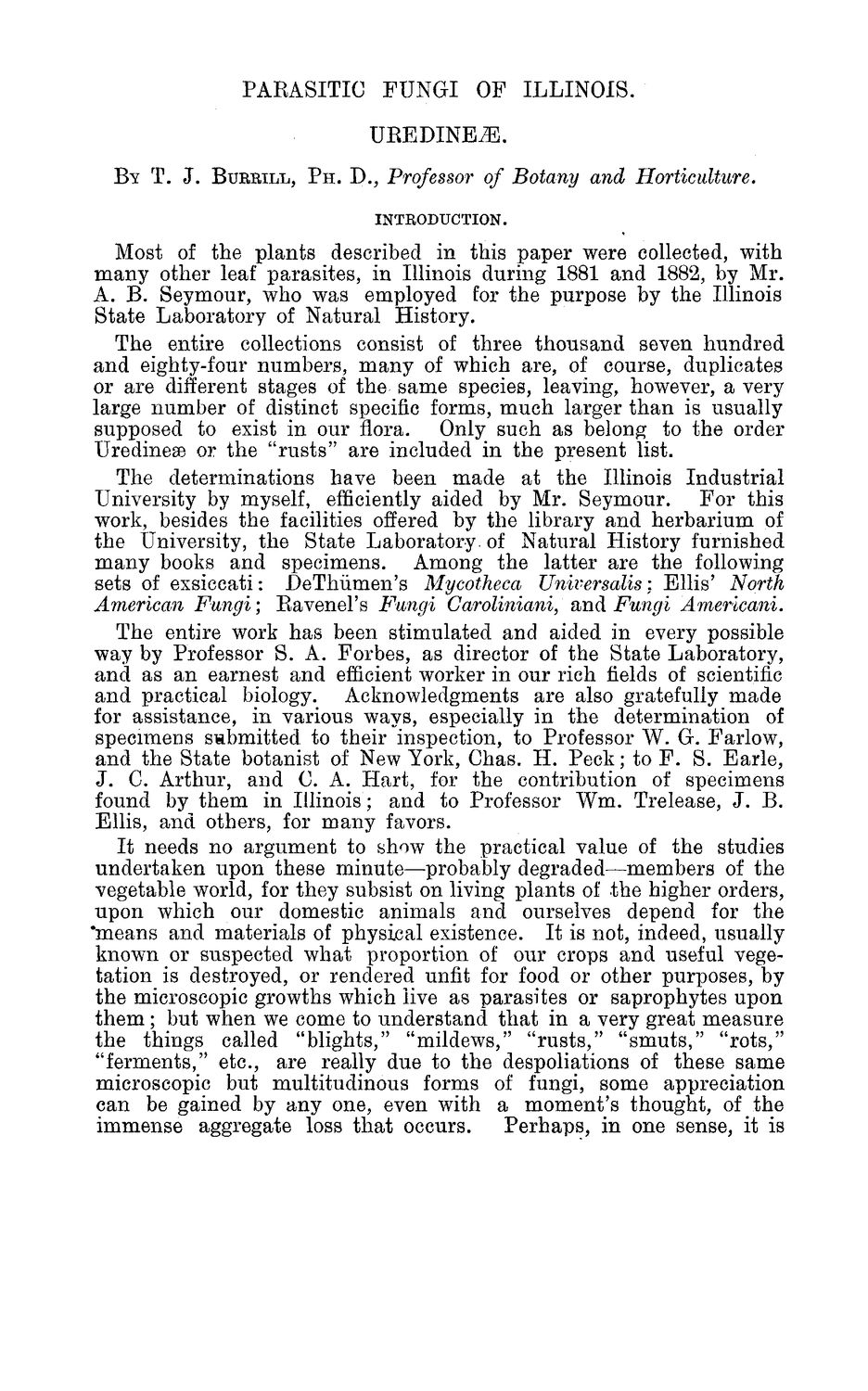| |
| |
Caption: Board of Trustees Minutes - 1884
This is a reduced-resolution page image for fast online browsing.

EXTRACTED TEXT FROM PAGE:
PAEASITIC FUNGI OP ILLINOIS. UBEDINE.E. BY T. J. BURRILL, P H . D., Professor of Botany and Horticulture. INTRODUCTION. Most of the plants described in this paper were collected, with many other leaf parasites, in Illinois during 1881 and 1882, by Mr. A. B. Seymour, who was employed for the purpose by the Illinois State Laboratory of Natural History. The entire collections consist of three thousand seven hundred and eighty-four numbers, many of which are, of course, duplicates or are different stages of the same species, leaving, however, a very large number of distinct specific forms, much larger than is usually supposed to exist in our flora. Only such as belong to the order Uredinese or the "rusts" are included in the present list. The determinations have been made at the Illinois Industrial University by myself, efficiently aided by Mr. Seymour. For this work, besides the facilities offered by the library and herbarium of the University, the State Laboratory, of Natural History furnished many books and specimens. Among the latter are the following sets of exsiccati: DeThiimen's Mycotheca Universalis: Ellis' North American Fungi; Bavenel's Fungi Caroliniani, and Fungi Americani. The entire work has been stimulated and aided in every possible way by Professor S. A. Forbes, as director of the State Laboratory, and as an earnest and efficient worker in our rich fields of scientific and practical biology. Acknowledgments are also gratefully made for assistance, in various ways, especially in the determination of specimens submitted to their inspection, to Professor W. G. Farlow, and the State botanist of New York, Chas. H. Peck; to F . S. Earle, J. C. Arthur, and C. A. Hart, for the contribution of specimens found by them in Illinois; and to Professor Wm. Trelease, J. B. Ellis, and others, for many favors. It needs no argument to show the practical value of the studies undertaken upon these minute—probably degraded—members of the vegetable world, for they subsist on living plants of the higher orders, upon which our domestic animals and ourselves depend for the 'means and materials of physical existence. It is not, indeed, usually known or suspected what proportion of our crops and useful vegetation is destroyed, or rendered unfit for food or other purposes, by the microscopic growths which live as parasites or saprophytes upon them; but when we come to understand that in a very great measure the things called "blights," "mildews," "rusts," "smuts," "rots," "ferments," etc., are really due to the despoliations of these same microscopic but multitudinous forms of fungi, some appreciation can be gained by any one, even with a moment's thought, of the immense aggregate loss that occurs. Perhaps, in one sense, it is
| |